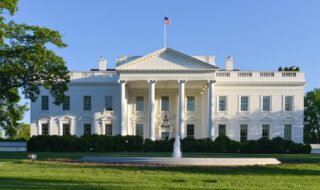March 31, 2025
Gov. Phil Scott, House, Senate all taking different approaches
At the Vermont State House, last year’s average statewide education property tax hike of 14% has been the elephant in the room all session – along with the underlying causes, including education funding and public employee healthcare costs.
As the Scott Administration announced in December, Vermonters face an average statewide education property tax increase of 6% this year. While there is some agreement on buying down the property tax hike this year, there is not yet consensus on what to do beyond 2025.
Worried about your property tax bill? Take action and make your voice heard HERE: Vermont’s Small Businesses Need Property Tax Relief!
It’s important for lawmakers to hear how high property tax bills – and high state taxes overall – impact your small business.
Background
Property tax bills and education funding are inextricably linked in Vermont. For most property owners, the statewide education property tax makes up the bulk of their bill.
By multiple accounts, the state’s per pupil K-12 education spending per pupil ranks in the top five among all states. Vermont is struggling with declining public school enrollment, drops in student test scores, staffing challenges, and aging school facilities that need costly repairs or replacement.
You can learn more about the complexities of the education property tax here: How does Vermont pay for schools? | Vermont Public.
High Property Tax Rates, High Bills
Vermonters – both homeowners and businesses – deal with some of the highest property tax rates in the country. According to a 50-state analysis of 2023 taxes paid (before Vermont’s 14% hike in 2024) done by the nonpartisan by the Lincoln Institute of Land Policy, effective tax rates were high for both rural and urban areas in Vermont.
Residential (Median Valued Home)
Urban (Burlington): 8th highest
Rural (Hartford): 14th highest
Commercial (Land and Building Value: $1 million)
Urban (Burlington): 17th highest
Rural (Hartford): 11th highest
Industrial (Land and Building Value: $1 million, personal property = 50%)
Urban (Burlington): 19th highest
Rural (Hartford): 15th highest
When comparing residential and commercial/industrial property taxes, it’s important to remember that many homeowners receive some sort of income-based relief. The same is not true for most small businesses.
Governor Scott’s Plan
Earlier this year, Governor Phil Scott released a broad education funding and property tax reform package the administration estimates would save more than $180 million. The plan centers on moving toward a more predictable foundation funding formula, consolidating school administration and facilities, and more efficient use of resources.
Under the state’s current funding system, school spending levels are set at the local level, and funding is set accordingly by the state using a mix of education property tax, sales tax, rooms and meals tax, and other revenue.
Most notably, Scott’s plan would consolidate the state’s existing 119 school districts into five regional districts with one elected school board for each regional district. The districts would have between 10,000 and 15,000 students, except for the Champlain Valley (Burlington) with 34,000. Local communities would be able to weigh in on local and regional decision-making through newly created School Advisory Councils.
This plan would be fully implemented for the 2027-28 school year. In the meantime, the governor proposes to use one-time funds to hold down property tax rates until reform achieves the expected savings.
Read more about Governor Scott’s Plan here: Education Plan | Office of Governor Phil Scott.
View Governor Scott’s presentation to the Vermont Legislature here: Education Plan Slides.
House Plan
In the Vermont House, lawmakers are proposing to use $77 million in one-time funds to buy down this year’s education property tax increase. This funding would take it from an average 6% hike to a 1% increase. This plan is advancing with bipartisan support, though there is some opposition from Democrats who question the wisdom of spending one-time funds due to the possibility of reduced federal funding and the cliff that one-time relief creates next year.
The House, in which Democrats maintain a solid majority, is not sold on the school district consolidation plan. They are proposing to study consolidation with a goal of having a fully formed plan next year that would set a minimum student population of 4,000 per district.
Senate Plan
The Vermont Senate also seems likely to buy down this year’s property tax increases, with Senate President Phil Baruth proposing to buy it down to zero and others aiming to simply dampen the increase.
The Senate has expressed more willingness than the House to shift toward a foundation formula and major consolidation plan sooner than later. However, the Senate plan would include more regional districts than Governor Scott’s plan. Senate Education Committee Chair Seth Bongartz has proposed a nine district solution that aligns with the governor’s timeline for full implementation by 2027-28.
However, there is some disagreement over whether it’s realistic to craft such a major overhaul with just a couple of months left in this year’s legislative session. And there is also some skepticism that the governor’s plan will produce the intended cost savings needed to stabilize property tax bills.
NFIB is a member-driven organization advocating on behalf of small and independent businesses nationwide.
Related Articles














